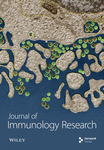Flavonoid-membrane Interactions: A Protective Role of Flavonoids at the Membrane Surface?
Abstract
Flavonoids can exert beneficial health effects through multiple mechanisms. In this paper, we address the important, although not fully understood, capacity of flavonoids to interact with cell membranes. The interactions of polyphenols with bilayers include: (a) the partition of the more non-polar compounds in the hydrophobic interior of the membrane, and (b) the formation of hydrogen bonds between the polar head groups of lipids and the more hydrophilic flavonoids at the membrane interface. The consequences of these interactions are discussed. The induction of changes in membrane physical properties can affect the rates of membrane lipid and protein oxidation. The partition of certain flavonoids in the hydrophobic core can result in a chain breaking antioxidant activity. We suggest that interactions of polyphenols at the surface of bilayers through hydrogen bonding, can act to reduce the access of deleterious molecules (i.e. oxidants), thus protecting the structure and function of membranes.




